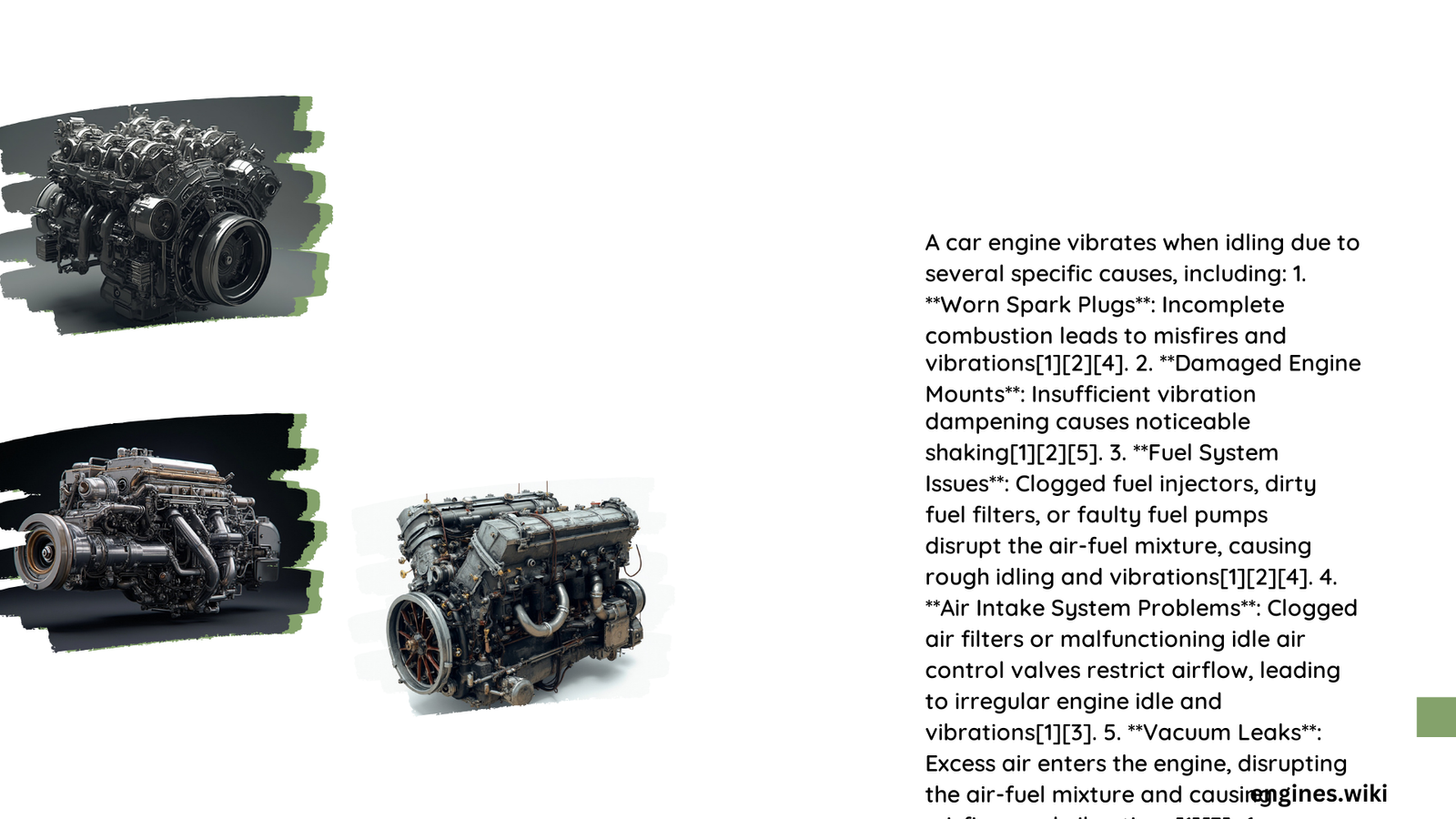Why Car Engine Vibrates When Idling: A Comprehensive Technical Analysis
Quick Overview
Vehicle engine vibrations during idle can be alarming and potentially indicate serious mechanical issues. These unsettling tremors often stem from complex interactions between multiple engine components, ranging from spark plug malfunctions to intricate fuel system disruptions. Understanding these nuanced vibration sources is crucial for maintaining optimal vehicle performance and preventing potential long-term damage.
What Causes Engine Vibration at Idle?
Are Spark Plugs Responsible for Vibrations?
Spark plugs play a critical role in engine combustion efficiency. When these components deteriorate, they can cause significant performance disruptions:
- Wear Indicators:
- Uneven electrode wear
- Carbon buildup
- Increased gap between electrodes
| Spark Plug Condition | Vibration Intensity | Performance Impact |
|---|---|---|
| New/Perfect | Minimal | Smooth Operation |
| Moderately Worn | Moderate | Slight Misfire |
| Severely Degraded | High | Significant Vibration |
How Do Fuel System Issues Trigger Vibrations?
Fuel system complications can dramatically affect engine stability:
- Fuel Injector Problems
- Clogged or malfunctioning injectors
- Uneven fuel distribution
-
Inconsistent spray patterns
-
Fuel Pressure Irregularities
- Low fuel pressure
- Blocked fuel filters
- Weak fuel pump performance
Can Motor Mounts Contribute to Engine Shaking?
Motor mounts serve as critical vibration absorption mechanisms. When compromised, they transmit engine movements directly to the vehicle’s chassis:
- Symptoms of Worn Motor Mounts:
- Excessive engine movement
- Pronounced vibrations during idle
- Visible physical deterioration
- Rubber component cracking
What Role Do Compression Issues Play?
Compression problems can create significant engine instability:
- Potential Compression-Related Causes:
- Worn piston rings
- Cylinder wall damage
- Valve seal deterioration
- Head gasket leaks
Diagnostic Approach to Vibration Analysis
How to Identify the Vibration Source?
- Professional Diagnostic Steps
- Use advanced diagnostic scanners
- Perform compression tests
- Inspect spark plug conditions
-
Check fuel system components
-
DIY Preliminary Checks
- Listen for irregular engine sounds
- Observe RPM fluctuations
- Check for check engine light indicators
Prevention and Maintenance Strategies
What Maintenance Prevents Engine Vibrations?
- Regular spark plug replacement
- Consistent fuel system cleaning
- Periodic motor mount inspection
- Timely compression system evaluation
Technical Recommendations
- Immediate Actions:
- Address vibrations within 500 miles of detection
- Consult professional mechanics for complex diagnostics
- Use high-quality replacement components
Conclusion
Engine vibrations during idle are complex mechanical signals requiring systematic investigation. While multiple factors contribute to these disturbances, methodical diagnosis and proactive maintenance can effectively mitigate potential long-term vehicle damage.

